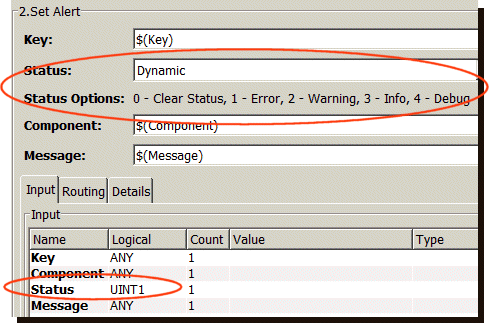Use the Set Alert action to create a textual and graphical alert notification for the node. You can also use the Set Alert action to clear alert notifications.
In addition to the user defined alerts created with the Set Alert action, the system will also set and clear system level alerts.
When an alert is set, it is displayed on the right pane
of the main window for the node as follows: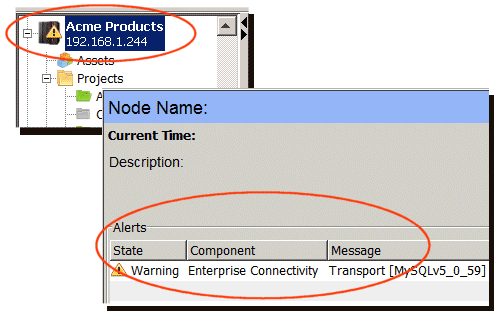
Notice the alert severity level graphic also appears on the
left pane on the node icon. When multiple alerts are set at
the same time, the icon for the highest level alert is
displayed on the node icon. Error is the highest level and
Debug is the lowest level.
In the example below, the Error level alert is the highest
level and its icon is displayed in the left pane on the
node icon.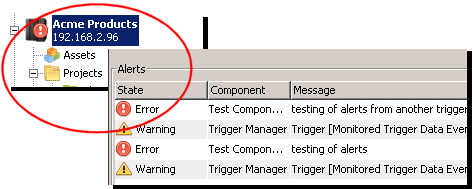
Creating an alert
The Set Alert action is available from the Trigger window as follows:
- From the Actions tab, click
Add.
The New Action window appears.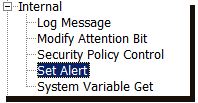
- Expand Internal, select
Set Alert, and then click
Add.
The right pane changes to accommodate a Set Alert action.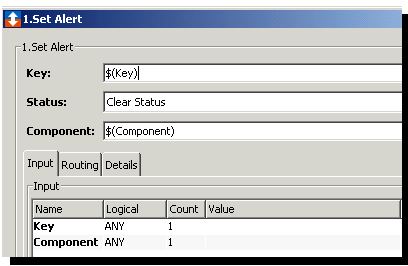
The Status parameter determines whether or not the Message parameter becomes available.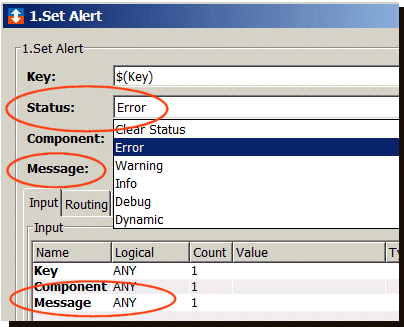
Property descriptions
This section describes the parameters that are available for Set Alert.
| Parameter | Description |
|---|---|
| Key | Required. A compound string used to create a key that identifies the alert for the node. |
| Status | The following are the severity
levels you can set for the
alert:
|
| Component | Required. A compound string used to identify a component that can be used to group alerts into categories for the node. With each $ (variable) name you type, a corresponding row is added to the Input tab. |
| Message
|
Required. For all
Status values (other
than Clear Status), a
compound string used to define the
alert message that will be displayed
with the alert. |
Input tab
The following shows an Input tab when
Dynamic is selected as the
Status.
For this example, the Input tab has the
values in the Value column set.
The following describes the rows and column values on
the Input tab for Set
Alert.
| Parameter | Description |
|---|---|
| Key | The compound string for the key. |
| Component | The compound string for the component. |
| Status
|
When the Status parameter is set to
Dynamic, the
Status input row is
available to set the value from a
variable. |
| Message
|
The compound string for the alert message. For all Status values (other than Clear Status), a compound string used to define the alert message that will be displayed with the alert. |
